“This is one of the most requested models in Epiphone’s history”: Foo Fighters fans rejoice – the Dave Grohl DG-335 is finally here and it’s got Gibson USA pickups
Pelham Blue with bound diamond soundholes and the Trini Lopez headstock... The colour and the shape of this Epiphone x Gibson Custom Shop collaboration looks the part
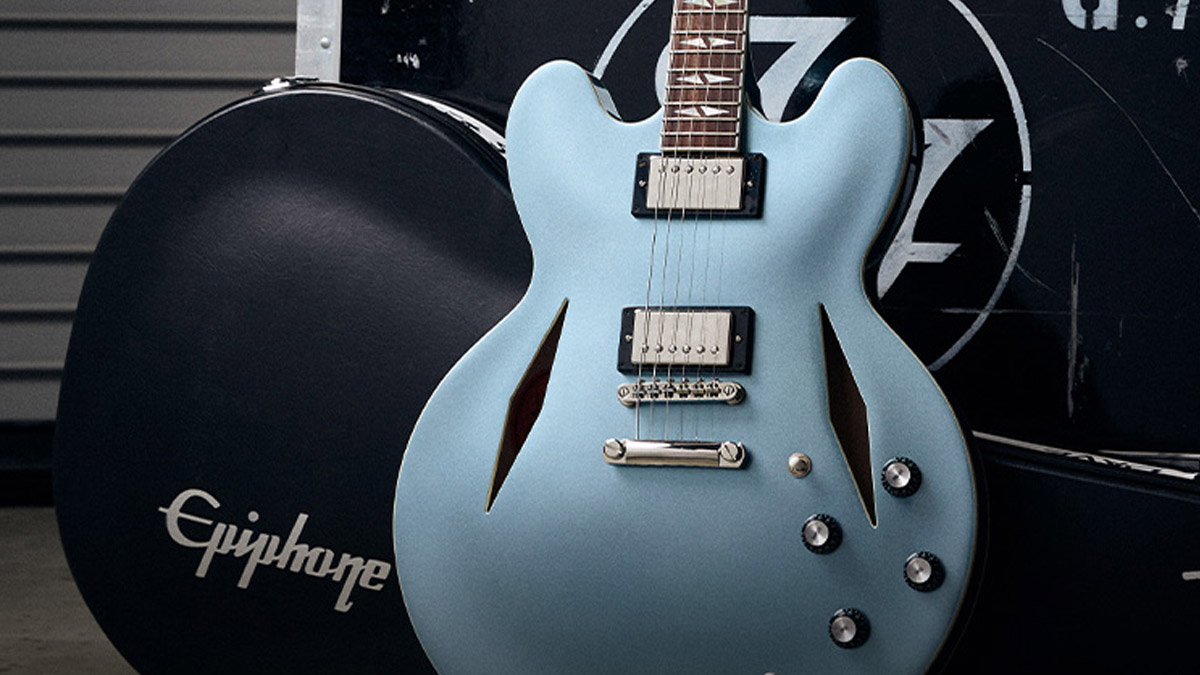
Long teased, much anticipated, Dave Grohl’s Epiphone DG-335 signature guitar has officially been released, with the Foo Fighters frontman’s new six-string resplendent in his tradmark Pelham Blue, with diamond-shaped soundholes and that Trini Lopez-style headstock making it such a distinctive looking semi-hollow.
Epiphone says it is one of the most requested electric guitars in the company’s history and we believe them. Was it worth the wait? Well, the DG-335 looks bang on the money, and the spec list is stacked high.
A pair of Gibson USA Burstbucker humbuckers (a Burstbucker 2 at the neck position, a 3 at the bridge) take a starring role on a build that calls to mind recent Epiphone x Gibson Custom Shop collaborations for Adam Jones’s 1979 Les Paul Custom and Kirk Hammett’s ‘Greeny’ 1959 Les Paul Standard.
But let’s not miss those little details, like the white single-ply binding that has been applied to the body’s top and back, the fingerboard and most pleasingly on those diamond-shaped soundholes.
The mother of pearl inlays on the fingerboard continue with the theme with split diamond detail, introducing more angles on a semi-hollow template that typically eschews straight lines. And those black top-hat style control knobs with nickel inserts look good against Pelham Blue.
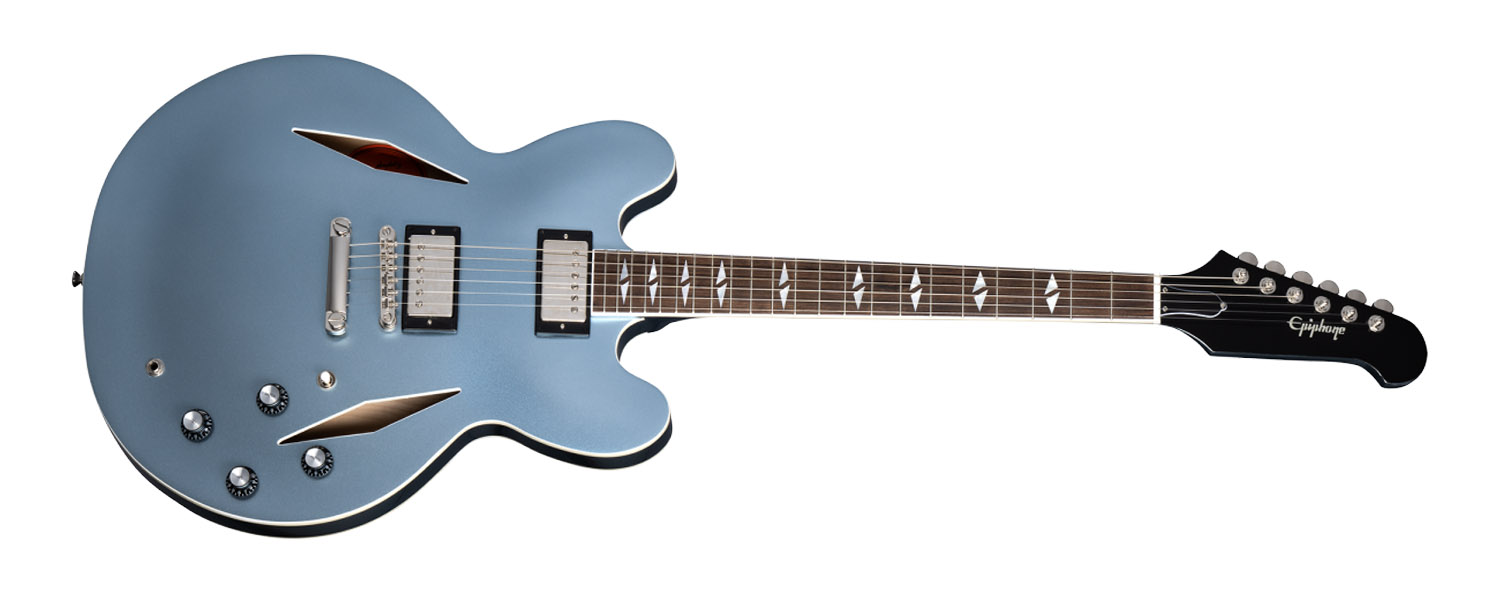
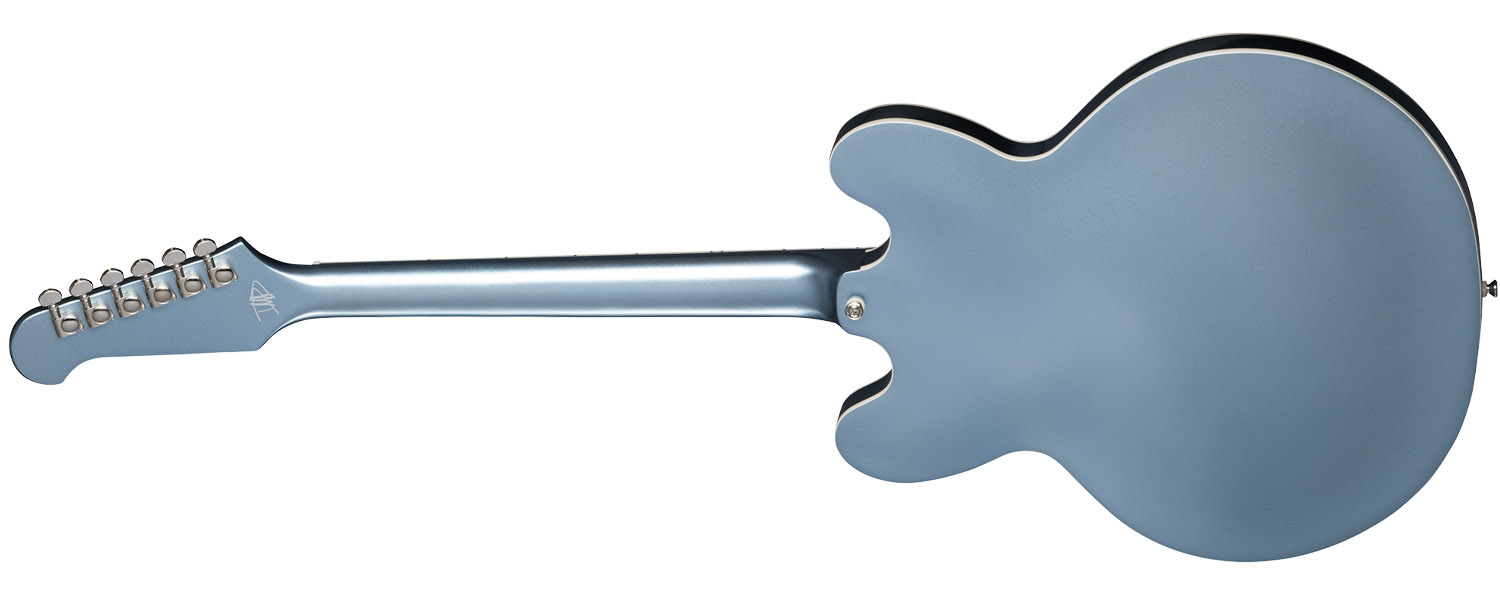
As with Jones and Hammett’s top-tier Epiphone guitars, the quality of the components is not to be sniffed at, with CTS pots and Mallory capacitors used as standard, and Switchcraft providing the three-way pickup selector switch and 1/4” output jack.
If the DG-335 looks like something a little bespoke that’s because it is, drawing its design cues from the Gibson Trini Lopez signature model and the classic semi-hollow template set by the ES-335. The form factor is similar. This has the ES-335 body, with Grohl’s model comprised of layered maple and poplar, and the all-important maple centre block to cut down on feedback in high-volume, high-gain playing scenarios.
Get the MusicRadar Newsletter
Want all the hottest music and gear news, reviews, deals, features and more, direct to your inbox? Sign up here.
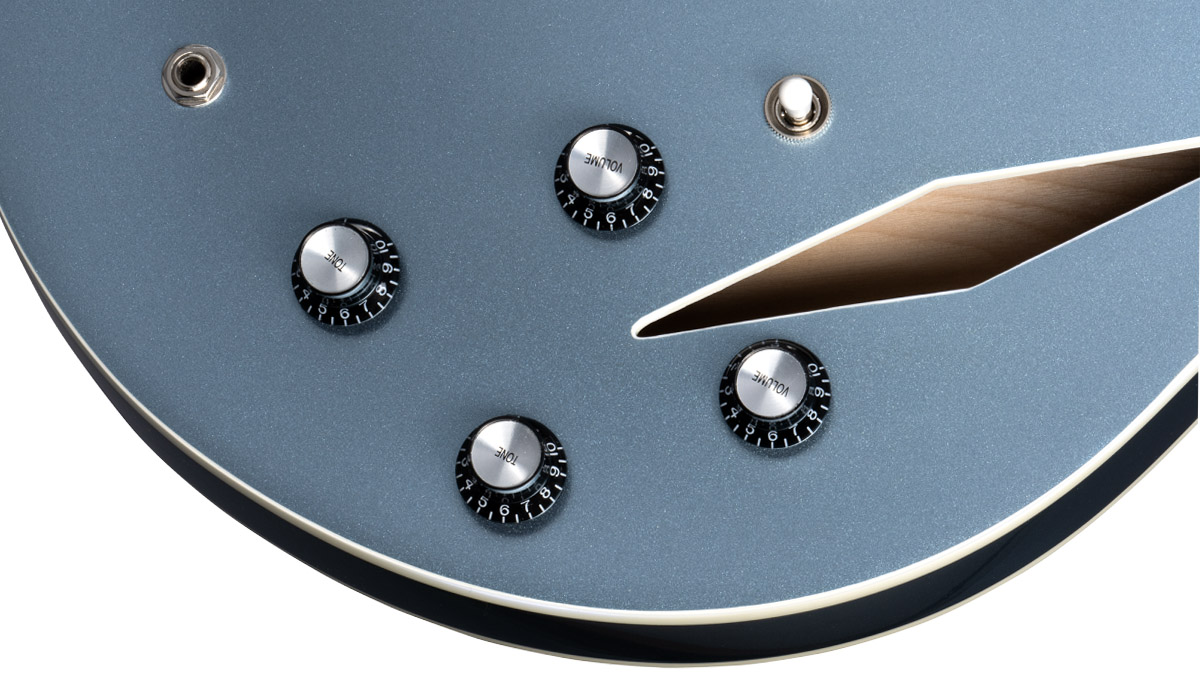
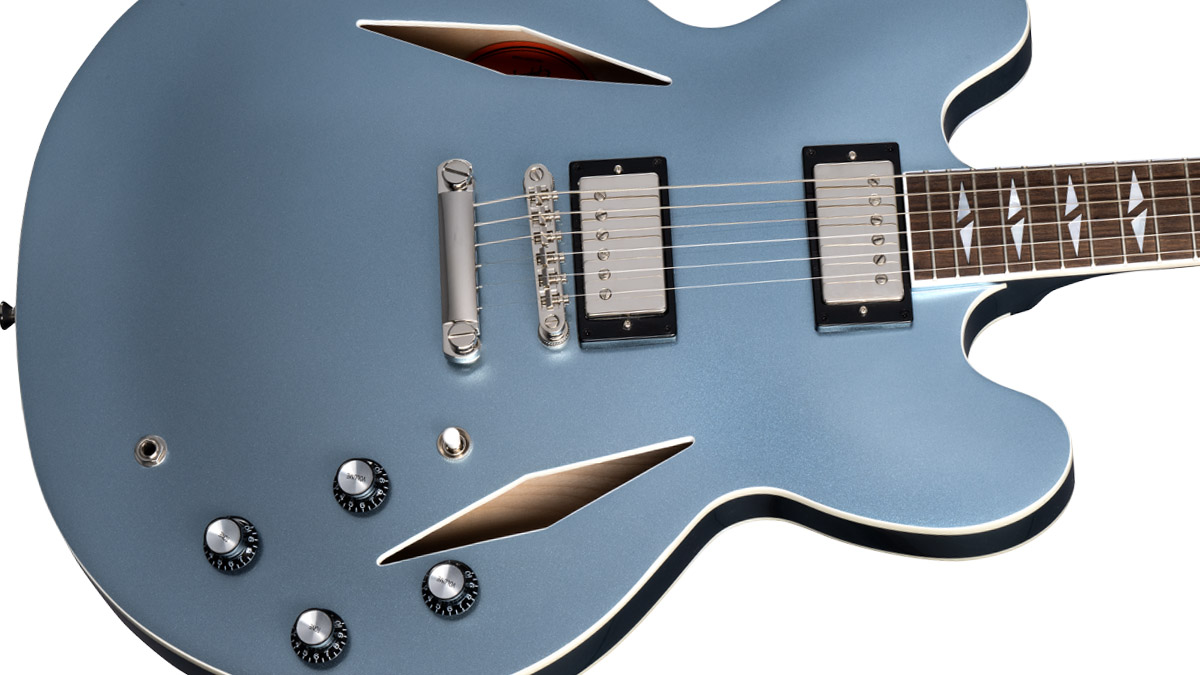
The one-piece mahogany neck is glued to the body and shaped into the elliptical neck profile that Grohl prefers, and it’s a shape that offers players plenty to hold onto when playing chords without feeling like you’re playing something too chunky.
The Pelham Blue finish extends across the neck and the back of the headstock, which is where you’ll find Grohl’s signature. And that’s that when it comes to signature appointments. This is one guitar that doesn’t need too many details to tell you who it was made for.

Elsewhere, the dimensions are classically Epiphone/Gibson, with a 24.75” scale length and 12” fingerboard radius both on-message for the brand. Other fundamentals to note are the 22 medium jumbo frets and the 43mm Graph Tech nut. It is equipped with a set of Grover Mini-Rotomatic tuners and a LockTone Tune-O-Matic bridge and stop-bar tailpiece.
Shipping in a signature hard-shell guitar case – because this is a serious guitar after all – the Dave Grohl DG-335 is priced £1,249 / $1,299. See Epiphone for more details.
Jonathan Horsley has been writing about guitars and guitar culture since 2005, playing them since 1990, and regularly contributes to MusicRadar, Total Guitar and Guitar World. He uses Jazz III nylon picks, 10s during the week, 9s at the weekend, and shamefully still struggles with rhythm figure one of Van Halen’s Panama.
“Instead of labouring over a perfect recreation, we decided to make an expanded counterpart”: Chase Bliss teams up with Mike Piera for Analog Man collab based on the legendary King Of Tone
“It’s about delivering the most in-demand mods straight from the factory”: Fender hot-rods itself as the Player II Modified Series rolls out the upgrades – and it got IDLES to demo them
![The Dave Grohl Epiphone DG-335 is FINALLY HERE! [Full Band Demo] - YouTube](https://img.youtube.com/vi/MHCl_6g1f0Y/maxresdefault.jpg)










